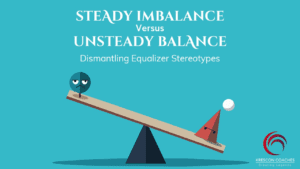Your mobile phone has a privacy setting to block Google from tracking your web activity. This meant that whatever you searched for, Google couldn’t track you for it if you shut down the web activity tracking feature.
Whatever you browse on Google or even YouTube, you can watch relevant content without being tracked for ads.
However, there’s just one problem when you activate this feature that blocks ads from tracking you. In the bargain of privacy settings, you also stop receiving suggested news online and suggested videos that are relevant to your search or interests on YouTube. You get nothing, no ads, no interesting news bytes, or entertainment videos.
So, what are you going to do? Will you choose to continue keeping your web activity tracking feature off or let it stay on?
“We build too many walls, not enough bridges.”
~Isaac Newton
We’re fearful of being vulnerable to the world or any search engine. Our privacy is our business, our fears are ours to handle, and our journey is ours to navigate.
But what happens when these walls that block out the pain, the sadness, and danger, also block out the joy, the peace, and the fullness of life?
The Walls of a Dead End
‘When she started to talk about her symptoms, she became noticeably tense and nervous. Her speech was rapid, and she leaned forward, resting her elbows on the desk. Her life had always been burdened with fears. She feared water, feared choking to the extent that she could not swallow pills, feared airplanes, feared the dark, and she was terrified of dying.’
Catherine (name changed by the author) was a real-life character in a book called Many Lives, Many Masters. She suffered and struggled with various types of deep-rooted fears. Her psychiatrist who is the author of this book, Dr Brian Weiss had yet to discover the extent of how deep her fears ran.
Her fears weren’t just related to the events that occurred as a child but rather transcended beyond realms and lives. Catherine needed more than just antidepressants. But even months after conducting sessions with her, Dr Weiss was unable to understand why she wasn’t improving.
Dr Weiss writes in his book: ‘I felt that she should have been much improved by now. Patients almost always improve when they remember unpleasant influences from their past, when they learn to recognize and correct maladaptive behavior patterns, and when they develop insight and view their problems from a larger, more detached perspective. But Catherine had not improved… I felt as if I had reached a wall, and that no matter what I did, that wall would remain so high that neither of us would be able to climb over it.’
Dr Weiss reached a wall that acted like a dead end. Were Catherine’s extreme fears a result of something larger and deeper? Were the walls an outcome of the traumas she experienced? Many questions loomed in Dr Weiss’s mind and while he did arrive at a conclusion and solution in his book, I urge you to take a temporary detour on a different journey just for a moment.
The 3 Manifestations of Fear
We are vulnerable and so we build walls. But is the cause of building walls? Indeed, fear is the very cause, and what is the cause of developing fears? Let’s find out:
Fear mainly stems from three areas:
1. The fear of getting what one does not want
2. The fear of not getting what one wants
3. And finally, the fear of losing something precious
The causes of these three manifestations are driven by the feeling of incompleteness. Yet again, we fool ourselves into thinking that we were never complete in the first place and that what we receive or give up will complete us.
So, we act accordingly:
1. I will be happy if I don’t get what I fear getting in life
2. I will feel good if I get what I want
3. I will feel a sense of completeness if I don’t lose what is precious to me
To control these manifestations, a person may depend on external factors to complete them. The controlling factor is the wall that is built internally.
A wall is a barrier behind which we stand tall, thinking it’s our protective shield. Just like a firewall that protects a website from hackers and malware attacks. But there are walls we’ve built internally in places where they are not needed.
We create walls because they are an easy way to keep foreign objects from entering.
· No one can hurt me as long as I stop myself from feeling.
· The reality of my life won’t bother me as long as I bury myself in my work.
· It’s best if I don’t get too close, this way, I won’t feel bad when they leave me.
· If I leave now, I won’t fear losing them in the first place.
· Best I keep a distance, lest they control my decisions.
But these walls are counterintuitive as they make us feel even more fearful.
“The walls we build out of fear define the type of vulnerabilities we possess. We use it to protect ourselves from the unpleasantness of life.”
~Krescon Coaches
Catherine too may have subconsciously developed walls to protect her from the traumas of her life. It only made her more vulnerable to the same things she tried to run away from. Eventually, her spiritual quotient was improved through awareness. In the several realizations that she made under Dr Weiss’s treatment, Catherine was able to break the walls of fear and live a wholesome life.
“We should be breaking down barriers, not building walls.”
~Ted Cruz
A leader with a high SiQ can identify these walls developed within and can work on dissolving them to experience leadership to its full potential.
A high spiritual quotient can help us drive ourselves to the ground of neutrality, do away with the feeling of incompleteness, and allow us to experience wholesomeness.
With a high SiQ:
· No one can hurt me permanently.
· The reality of my life won’t bother me because I am in control.
· I won’t feel bad when they leave me.
· I do not fear losing something or someone because I am already complete.
· I do not have to distance myself from people who need my decision-making skills.
With a high SiQ, a door of fulfillment is designed on our internal prison walls that allows us to surrender to life’s gifts.
Here is a wonderful poem I read that helps me define how SiQ impacts the walls we build. Read it to the end and you will understand.
The Walls We Build… ~by Karayan
Brick by brick the stones are laid
to the many walls in our lives, we build.
Every agony and joy we feel
adds mortar to the foundations.
We toil away day and night,
surviving through each passing moment.
We mince our words,
hiding behind society’s proprieties.
Another brick is laid,
and another wall is built,
for every harshness we bottle up inside.
But the walls that are the hardest to break through
are the ones we build because of those we love.
Every Dear John letter,
every “I won’t be home tonight, I have to work late,”
Every time your “better half” is seen hanging all over
some tall, lean fellow at the bar…
The walls build and build without reprieve.
And then one day, you find yourself alone.
You find yourself in the dark
with nothing but walls around you.
You see, we are all quite good at building walls,
but there is one thing we always forget;
and that is to build ourselves a door.



